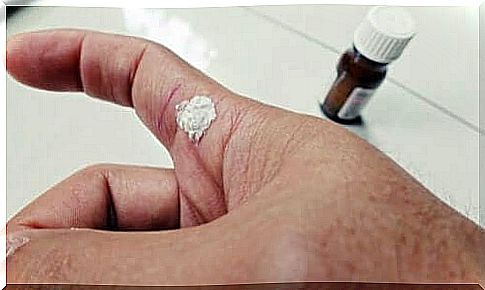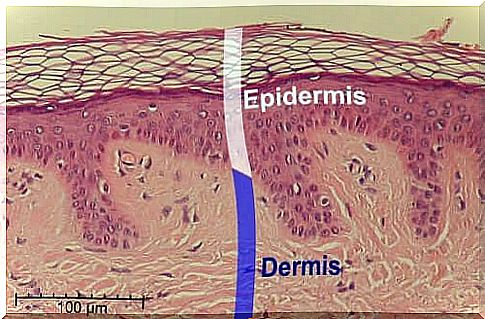Salicylic Acid: Good For Skin Problems
Salicylic acid belongs to the group of analgesic, antipyretic and anti-inflammatory agents. It was first described more systematically in the 18th century by Edward Stone. This English clergyman had observed that teas made from the bark of the white willow reduced fever.

The salicylic acid is a chemical substance with skin and cornea resolution and antimicrobial properties. It is salicylic often in areas such as dermatology one. Because, among other things, it is able to promote peeling of the skin. It can also prevent infections caused by bacteria and fungi, for example.
In addition , salicylic acid has the ability to regulate the amount of fat in the skin and it can be used as an anti-inflammatory agent. Hence, it is also considered to be a fundamental substance to improve the appearance of aging skin.
Where does salicylic acid come from?

The bark of the white willow ( Salix alba ) contains a substance called salicin. Salicylic acid is obtained from this. But you can also find salicin in other plants. For example in the leaves of birch trees or wintergreens.
As already mentioned, salicylic acid belongs to the group of analgesic, antipyretic and anti-inflammatory agents. It was first described more systematically in the 18th century by Edward Stone. This English clergyman had observed that teas made from the bark of the white willow had an antipyretic effect.
Synthesis began for the first time at the end of the 19th century . The aim was to replace quinine, which was difficult to obtain at the time, in the treatment of fever and pain. Salicylic acid also had some positive properties for external use.
Effects of salicylic acid
The effect of salicylic acid on the skin may be related to its effect on the structure of the skin. Because salicylic acid has an influence on the bonds between the horny cells of the epidermis and also on their peeling. This property is also called keratolytic.
Therefore , as already mentioned, this acid causes the skin to flake off (peel). It is also antimicrobial. The concentration is between 5 and 10%.
It is also believed to have a direct anti-inflammatory effect. However, this has not yet been confirmed by relevant studies. In lower concentrations, between 1 and 3%, salicylic acid has, among other things, so-called keroplastic properties. This means that it strengthens the skin and helps it regain its suppleness.
Keratoplastic substances are therefore those that promote the regeneration of the horny layer of the skin and also normalize increased cornification. Keratolytic substances soften and loosen the skin, nails and calluses, so they have the above-mentioned peeling effect.
It should also be noted that salicylic acid is fat-soluble. This means that it can be mixed with and dissolved in the fats present in the epidermis. The same applies to sebum collected in the pores.
Therefore, salicylic acid has a peeling and peeling effect in this area of the skin. And depending on the concentration, it can have a keratoplastic or keratolytic effect.
When is salicylic acid used?

In the following we present 9 of the most important forms of application for this acid :
- Keratolytic : In the concentrations mentioned above, salicylic acid is used, for example, to treat warts.
- Keratoplasty : 0.5% on the edge of soft tissue inflammation.
- For regeneration of photodamaged skin : In these cases, salicylic acid is used for treatment either alone (in concentrations of 10% to 15% in ointments or creams) or together with AHA (alpha hydroxy acid) or retinoic acid. They are used to treat actinic keratosis and sunspots on the back of the hand and forearms.
- As light protection: Here it acts like a chemical filter.
- Antifungal : Use in case of fungal attack on the skin. Here, salicylic acid facilitates the penetration of anti-fungal drugs by eliminating the horny layer.
- As an anesthetic : the acid also has a certain numbing effect. Because it plays a role in the prostaglandin synthesis. These are substances that are associated with the perception of pain. For example, salicylic acid is used to relieve pain in certain types of inflammation.
- Use as pain relievers : Some derivatives of salicylic acid are also used to relieve pain in bursitis and muscle pain.
- For itching: The acid can also help relieve itching.
- As an anti-inflammatory agent : Just like the mildly numbing and analgesic effect, the anti-inflammatory effect is also based on the ability to inhibit the synthesis of prostaglandins.
Undesirable side effects and contraindications
Like all drugs and chemical substances , salicylic acid can cause a number of undesirable side effects. These include the following:
- Toxicity : If the substance gets into the blood, it can cause some problems like nausea and vomiting.
- In addition, it should not be used on pregnant women. Because of its properties, the acid can also harm the unborn child when used externally.
- Allergic reactions : Likewise, people who are allergic to this substance should not use it. Otherwise it could lead to serious complications.
- It can also be a state of confusion come. But these types of side effects are less common.
Conclusion
Salicylic acid is still used with good effectiveness for external application. Newer ones are added to the traditional areas. With proper use and dosage, this medicine is completely safe to use. But of course, you should always consult your doctor beforehand.









